|
| |
| HOME |
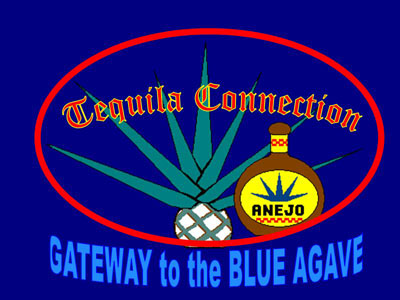
|
|
All About Tequila Background music "Mexican Moonshine" courtesy of Roger Clyne and the Peacemakers BACKGROUND MUSIC CONTROLS Tequila Connection collected an assortment of tequila related information during annual visits to Jalisco (2009 through 2015), as well as from a variety of Internet sources. For more details, click on the above link to SOURCES and NOTES. INTRODUCTION 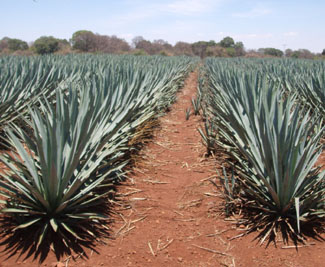
Tequila is an agave-based spirit made primarily in the area surrounding Tequila, Jalisco, 65 kilometers (40 miles) in the northwest of Guadalajara and in the highlands (Los Altos) of the western Mexican state. The volcanic soil in the region surrounding Tequila is particularly well suited to the growing of the cactus-like blue-agave, and more than 300 million of the plants are harvested there each year.[1] However, Mexican laws state that tequila can be produced only in the state of Jalisco and limited regions in the states of Guanajuato, Michoacán, Nayarit, and Tamaulipas Tequila sold in Mexico most often contains an alcohol content of 38% (76 proof). Tequila sold in the United States is most often made at a 40% alcohol content (80 proof), but there are also several varieties of tequila produced with 35-50% alcohol content (70-100 proof). | |
|
TEQUILA HISTORY, TRIVIA & MYTH
Tequila - the beverage associated with Mexican ranchers, cowboys
and bandits - has migrated into the hands of mainstream America.
Premium tequilas have risen steadily in status over recent years
and are now seated on the top shelf along side other fine spirits
such as cognac and scotch. Sure, many folks still mix tequila in
margaritas or slam it down with salt and lime, but a growing mass
of people from all walks of life are discovering fine tequila can
be enjoyed in sipping style. In part, tequila earned its rowdy reputation
by appearing at frat parties where obnoxious behavior and next-day
hangovers are common. This won't change anytime soon, however, many
have realized there is another side to this intriguing spirit. 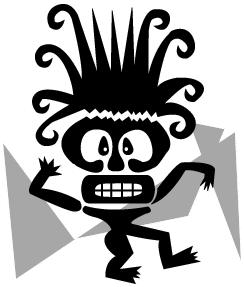
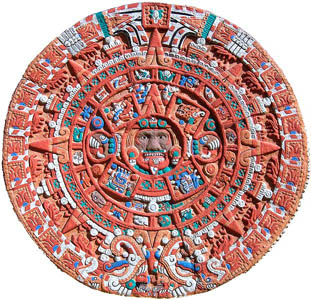
Although the first tequila production was reported in the 1600s, some experts argue it was being produced several years earlier by some haciendas for their personal use. Production was done behind closed doors because if caught, the hacienda would be forced to pay taxes to the Spanish crown. [35] 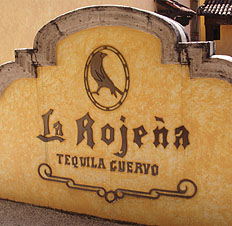
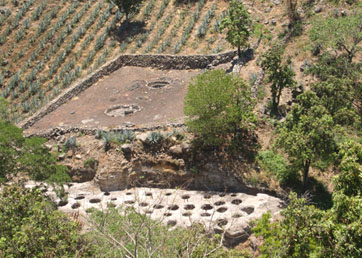
Read more on this topic by visiting our World Tequila Day page (Scroll down to "Disputing Tequila's Oringins") and view photos of the Tecuane Canyon production site by selecting the Tecuane Canyon link at our Photo Gallery Selection Page. José Antonio Cuervo was the first licensed manufacturer. In 1758 the King of Spain granted Senior Cuervo the rights to cultivate a parcel of land. The agave fields have been growing in numbers ever since. In 1997, Cuervo's output reached 37 million liters of tequila, of which 76% was exported. Cuervo remains the largest producer and exporter of tequila today.[36] 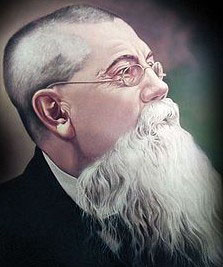
In the 1630s Mexican vendors (traveling on donkeys from pueblo to pueblo selling goods) helped spread the word of the new drink called mezcal wine. [38] However, tequila would not gain its due respect for hundreds of years. After 1821 when Mexico attained independence, Spanish products became increasingly difficult to obtain, opening the door for tequila to flourish. Tequila became a symbol of national pride during the Mexican Revolution. French products were cast aside, replaced by a patriotic desire to support Mexican goods. In addition, prohibition in the USA had positive impact to tequila's popularity and demand was on the rise as it was smuggled across the border. Demand spiked again in the USA during World War II when spirits from Europe became scarce. Increased production during this period brought on the need for governmental oversight. This led to the creation of two entities which have since transformed into Mexico's present-day regulatory organizations. In the mid 1900s, Mexico was staking its claim. Through years of effort, international treaties and agreements, Mexico gained acceptance and recognition as the only country that can legally produce "Tequila". Mexico established strict regulations to ensure tequila is produced within specified guidelines in order to maintain a level of quality. To be called Tequila, it must contain at least 51% agave tequiliana Weber, variety azul. However, most premium tequilas are made from 100% blue agave, and this is normally indicated on the label. | |
|
TEQUILA MYTHS 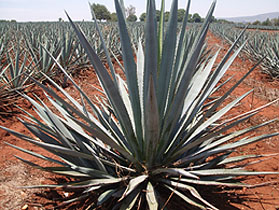
Although
Mexico's tequila is rich in culture, history and legend, it is also
confused and misunderstood. Many people think tequila is made from
a cactus. This is a myth. Tequila is made from the Weber Blue Agave,
a succulent plant related to the lily and amaryllis. It grows in
a cactus-like environment, but it is not a cactus. The blue agave
has a life-span of 7-15 years, stands 2 or more meters tall, and
has a diameter of 2-4 meters. 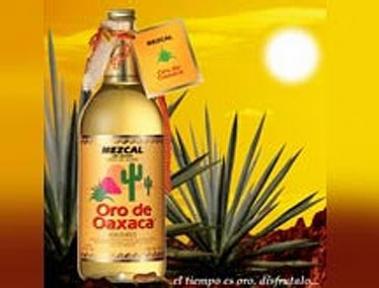
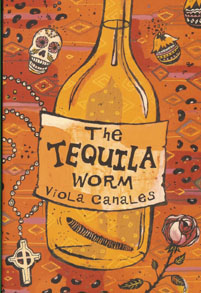
The worm is a marketing ploy, as it has lost its nutrients inside the bottle. If you do find a worm in a bottle of mezcal, you can drink it without worry as the alcohol has thoroughly sanitized it. Although consuming the worm does not result in any special aphrodisiac powers or hallucinogenic effects, some find it somewhat spiritual and imaginative. In recent years many manufacturers have began producing premium tequilas in collector bottles costing $60 - $100 USD or more. Although the fancy bottles are quite charming, if you forego this pleasure, you can find quality 100% agave tequila for less than half the price. Most tequila sold in the US for less than $20 a bottle is not 100% agave, but rather a mixture of 51% agave and 49% something else. Purists demand 100% agave tequila. Which tequilas are supreme is really a matter of individual taste. Some prefer the rough bite and strong agave presence of un-aged blanco tequila. Others like the characteristics of a middle-aged reposado, and some prefer the smoothness and woody aromas of an older añejo. Take the time to experience the different brands available and decide for yourself which is best. | |
|
RECENT HISTORY
In 2017, trade body the Distilled Spirits Council released data showing that sales at the super-premium end of the tequila spectrum had grown by 706% in the US since 2002. Meanwhile, in the UK, another key tequila market, value sales shot up by 37% in two years as drinkers swap shots for cocktails and higher-end neat serves, according to the Wine and Spirit Trade Association. 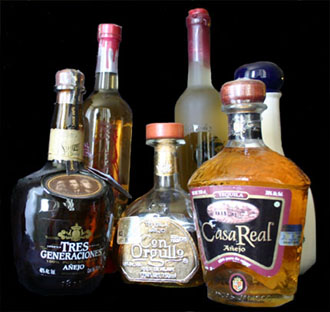
The Tequila Regulatory Council of Mexico originally did not permit flavored tequila to carry the tequila name.[8] In 2004, the Council decided to allow flavored tequila to be called tequila, with the exception of pure agave tequila, which still could not be flavored. [8] A one-liter bottle of limited-edition premium tequila was sold for $225,000 in July 2006 in Tequila, Jalisco, by the company Tequila Ley .925. The bottle which contains the tequila is a two-kilo display of platinum and gold. At that time the manufacturer held the Certificate from Guinness World Records for the most expensive bottle of spirit ever sold. [9] However, on 9 August 2013, the LATINO DAILY NEWS reported a far more expensive bottle of Ley .925 now holds the World Record. The new bottle, which is worth a reported $3.5 million, is made of 3.6 kilos of pure platinum and is covered with 6,400 diamonds. In 2008, Mexican scientists discovered a method to transform 80-proof (40% alcohol) tequila into diamonds. This process involves heating the tequila to over 800 degrees C (1,400 degrees F) to vaporize the tequila. The tequila particles are cooled, and settle upon steel or silicon trays in an even, pure layer. The results are hoped to have numerous commercial and industrial applications, but are far too small (100-400 nm diameter) for use in jewelry. [10] In 2003, Mexico issued a proposal that would require all Mexican-made tequila be bottled in Mexico before being exported to other countries. [11]The Mexican government said that bottling tequila in Mexico would guarantee its quality. [11] Liquor companies in the United States said that Mexico just wanted to create bottling jobs in their own country.[11] Liquor companies in the United States also claimed this rule would violate international trade agreements and was in discord with usual exporting practices worldwide.[12] The proposal might have resulted in the loss of jobs at plants in California, Arkansas, Missouri, and Kentucky, because Mexican tequila exported in bulk to the United States is bottled in those plants.[12] On January 17, 2006, the United States and Mexico signed an agreement allowing the continued bulk import of tequila into the United States.[13][12][14]The agreement also created a "tequila bottlers registry" to identify approved bottlers of tequila and created an agency to monitor the registry.[12] | |